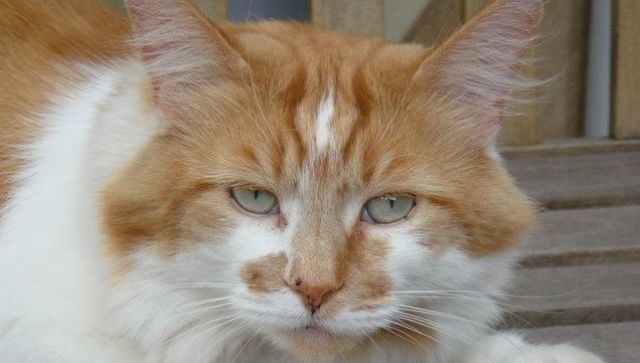At home, the average cat lives for about 12-15 years. But already from the age of seven, the process of her natural aging begins. At this time, the pet becomes calmer, less mobile begins to spend a lot of time in a dream. In addition, she may have problems with her teeth, digestive system, and metabolism, as well as other diseases of internal organs.
With age, the cat’s interest in food increases, so be sure to monitor the weight of your pet. This must be done even if the animal is spayed or neutered.
The food that a cat needs at this stage of life should be rich in proteins and vitamins, and the number of carbohydrates supplied should be minimized. The main points to pay attention to when feeding an aging pet are the number of feedings, the calorie content of the food, the balance of the products included in the feed.
Number of Meals

The optimal feeding regime for an eight-year-old cat is two meals a day. Moreover, the time difference between meals should be at least 10 hours, and evening feeding is carried out no later than 8 pm.
Calorie Content of Food
The motor activity of the animal decreases in the second half of its life. If the cat eats the same amount of food, then it has an increase in body fat. To prevent this from happening, you need to reduce the calorie content of food consumed.
At this stage of life, it is recommended to feed the four-legged pet with lean meats, for example, give her veal, chicken breast, or rabbit meat. It is imperative to introduce fish or seafood, cereals, a little vegetable or butter, vegetables, and dairy products into the animal’s diet.
It is advisable to give up by-products in the cat’s diet (liver, kidneys, heart) and foods with high-fat content.
Nutritional Balance
When feeding an animal, it is necessary to establish a strict rate of food intake by changing the number of proteins, fats, and carbohydrates consumed in the animal’s diet. After some time, the cat will definitely get used to the new formula and this will have a positive effect on her general well-being.
Accompanying Illnesses
If a cat has kidney disease, then it is imperative to monitor how it reacts to consumed protein. If necessary, its content in food should be reduced.
For pets with dental problems, it is necessary to cook for a softer consistency.
If the cat suffers from cardiovascular disease, then it should be switched to a diet with low salt content.
By old age, the cat’s sense of smell begins to decrease and, in this regard, she often refuses food, in this case, it is necessary to increase her interest in feeding. This can usually be done by adding flavorful foods to your food, such as placing flavorful shrimp on the bottom of the main food bowl.
It is also worth noting that today, cat food manufacturers offer many different nutritional options to meet all the needs of an aging animal.
By choosing the right diet for your four-legged friend, you can significantly extend the life and quality of his life.

